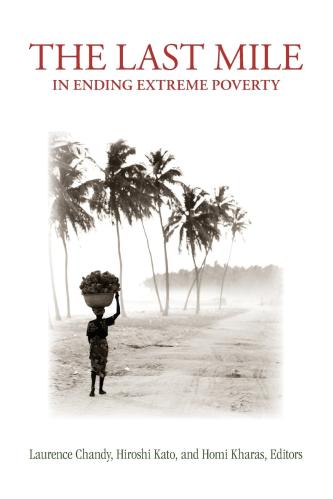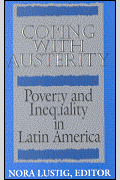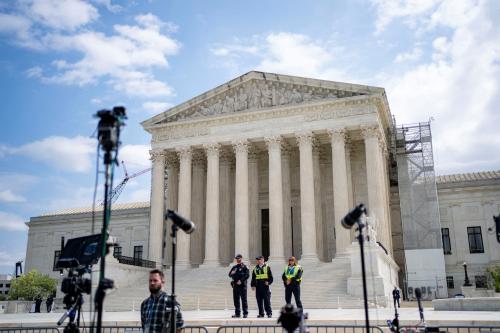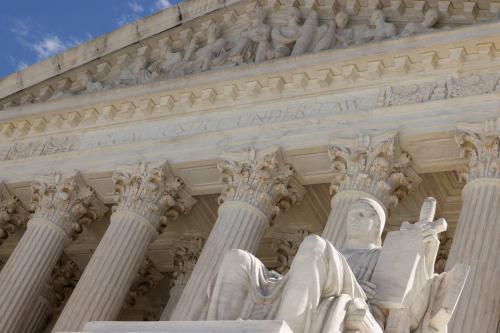“Don’t you believe that if every kid in every difficult neighborhood in America were in a religious institution on weekends—a synagogue on Saturday, a church on Sunday, a mosque on Friday—don’t you really believe that the drug rate, the crime rate, the violence rate, the sense of self-destruction would go way down and the quality and character of this country would go way up?”—President Clinton in a speech to high school students in suburban Virginia, 1995
By now, almost everyone is aware that America’s juvenile crime problem is bad and getting worse. Certainly, state and local justice system officials know it. For example, the Florida Department of Law Enforcement has reckoned that since 1971, Florida’s juvenile population grew by about 25 percent, but its juvenile violent crime arrest rate grew by 365 percent. Last year a juvenile was arrested for murder every other day in Florida. The number of juveniles arrested in Florida could double by the year 2010.
The country’s best “street-level analysts” of the youth crime problem—namely, local police, prosecutors, and inner-city preachers like my friend and colleague on the panel, Reverend Eugene Rivers—know that the kids doing the violent crimes are more impulsively violent and remorseless than ever. For instance, my colleague on the Council on Crime in America, Philadelphia District Attorney Lynne Abraham, speaks of the frightening reality of elementary school kids who pack guns instead of lunches. Likewise, my friend Dan Coburn, a former Superior Court Justice and Public Defender in New Jersey, recently wrote that “This new wrote horde from hell kills, maims, and terrorizes merely to become known, or for no reason at all. These teens have no fear of dying and no concept of living.”
Maximum-security prisoners agree. When I asked what was triggering the explosion of violence among today’s young street criminals, a group of long- and life-term New Jersey prisoners did not voice the conventional explanations such as economic poverty or joblessness. Instead, these hardened men cited the absence of people—family, adults, teachers, preachers, coaches—who would care enough about young males to nurture and discipline them. In the vacuum, drug dealers and “gangsta rappers” serve as role models. “I was a bad-ass street gladiator,” one convicted murderer said, “but these kids are stone-cold predators.”
What I have termed juvenile “superpredators” are born of abject “moral poverty,” which I define as the poverty of being without loving, capable, responsible adults who teach you right from wrong. It is the poverty of being without parents, guardians, relatives, friends, teachers, coaches, clergy and others who habituate you to feel joy at others’ joy, pain at others’ pain, happiness when you do right, remorse when you do wrong. It is the poverty of growing up in the virtual absence of people who teach these lessons by their own everyday example, and who insist that you follow suit and behave accordingly. In the extreme, it is the poverty of growing up surrounded by deviant, delinquent, and criminal adults in chaotic, dysfunctional, fatherless, Godless, and jobless settings where drug abuse and child abuse are twins, and self-respecting young men literally aspire to get away with murder.
Scholars who study drugs and crime are only now waking up to the social consequences of raising so many children in abject moral poverty. Policymakers and the public-at-large should listen to what the academics have to say. But we don’t need yet another library full of jargon-riddled criminology studies to tell us what the Roman sages knew: what society does to children, children will do to society. The need to rebuild and resurrect the civil society (families, churches, community groups) of high-crime, drug-plagued urban neighborhoods is not an intellectual or research hypothesis that requires testing. It’s a moral and social imperative that requires doing—and doing now.
But how? There are many possible answers. Let me highlight two—jails and churches.
The facts and figures support the public’s fears of violent crime, adult and juvenile. The juvenile justice system, like the adult system, is a revolving door. For example, in 1993 alone some 9,000 juveniles were arrested for violent crimes (murder, forcible rape, robbery, and aggravated assault) in Florida. But at the end of 1993 a total of only 1,300 juveniles were in secure custody in Florida—fewer, in fact, than were in confinement in 1971. And Florida is among the states that have enacted laws intended to restrain violent and repeat juvenile criminals.
Some academic experts may wish to minimize the reality of revolving-door juvenile justice. But I have talked to scores of big-city prosecutors all across the country, and they are scared and sick to death of the system’s failure to take juvenile crime seriously. So are many police chiefs and officers. And so are most average Americans.
Juvenile superpredators not only inflict harm on innocents, they kill each other. A recent study found that of the 155 persons age 21 or younger murdered by guns or knives in Boston from 1990 to 1994, 95 percent of the young killers and 75 percent of the young victims had criminal histories.
It could not be clearer. Unless we close the revolving door on juvenile crime, we will close the coffin on more juveniles.
The moral message that the present system sends to kids who are struggling to do the right thing is, “You’re on your own. Nobody cares. You’re a sucker.” That’s the message they get when they witness the nation’s 600,000 street gangsters controlling their streets, and why they see death-dealing drug dealers arrested one day and back on the streets the next. The lesson they learn is, “If the superpredators can’t be beat, why not join them.”
No one relishes the thought of locking up more juveniles. But it must be done. The federal Office of Juvenile Justice and Delinquency Prevention (OJJDP) should be directed to assist the states in securely, humanly, and cost-effectively incarcerating kids who criminally violate the life, liberty, and property of others. OJJDP and the rest of the federal juvenile justice establishment needs to get out of its anti-incarceration time warp, or at least get out of the way of state efforts to crack down on violent juvenile offenders.
Of course, how many juvenile jails we need will depend largely on how many of today’s at-risk 4- to 7-year-old boys become the next century’s first crop of 14- to 17-year-old superpredators. And that, in turn, will depend greatly on how much local, community-level, and faith-based institutions do to save these children—and the rest of us—before it’s too late. With respect to inner-city youth crime, our guiding principle should be, “Fill churches, not jails.”
On this subject, Reverend Rivers speaks from the oracle of truth, experience. By way of conclusion, let me state for the record that a growing body of empirical research supports what he has to say about the efficacy of church-centered approaches to battling crime, delinquency, and other economic and social problems.
Researchers have long known that urban poverty and joblessness are directly influenced by community norms and networks. Religious institutions consistently emerge as a key node of such networks. Several recent econometric studies, for example, find that controlling for all relevant individual characteristics (race, gender, education, family structure, and so on), urban youths whose neighbors attend church are more likely to have a job, less likely to use drugs, and less likely to be involved in criminal activity. In other words, church-going has what economists term “positive externalities.” In this case, church-going affects the behavior of life prospects of disadvantaged youths whether or not they themselves attend church. Just as research by myself and others shows that high concentrations of liquor outlets create “negative externalities” in poor communities—for example, heightened rates of criminal victimization that affect people whether or not they themselves drink or abuse alcohol—so does the presence of active religious institutions mediate crime and other social ills, both for people who attend temple, church, or synagogue and for their neighbors who don’t.
This Congress should do whatever can be done without running afoul of real Constitutional constraints to eliminate the regulatory and other barriers to faith-based efforts to resurrect the civil society of the nation’s inner cities. And private individuals and philanthropists that support the withdrawal of the federal government from the social welfare arena ought to put their time, money, and voluntary efforts where their civil society rhetoric now is.
Time is running out.






Commentary
TestimonyFill Churches, Not Jails: Youth Crime and “Superpredators”
February 28, 1996